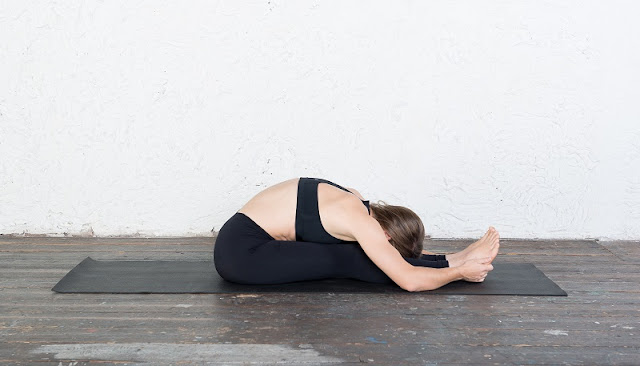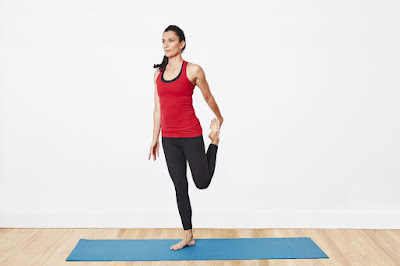Pliability Workout To Improve Your Performance & Reduce Risk of Injury
(Image credit: IG: obi_vincent)
Are you tired of the same old fitness routines that leave you feeling stiff and sore? It's time to discover the transformative power of a pliability workout. Not only will it help you improve your performance, but it can also reduce the risk of injury. In this article, we'll delve into the world of pliability training, explore its benefits, and provide you with a comprehensive workout plan that will leave you feeling more flexible, agile, and ready to conquer any physical challenge that comes your way.
The Power of Pliability
Pliability, often referred to as flexibility or mobility, is a crucial aspect of physical fitness that is often overlooked. Unlike traditional strength or cardio workouts, which focus on building muscle or endurance, a pliability workout prioritizes the range of motion in your joints and the elasticity of your muscles and connective tissues.
Imagine your body as a well-oiled machine; without proper flexibility, it's like trying to run that machine with rusty gears. Over time, this can lead to decreased performance, limited movement, and an increased risk of injury.
Here are some compelling reasons why you should incorporate pliability training into your fitness routine:
1. Improved Performance
Enhanced pliability means improved performance in various physical activities. Whether you're an athlete aiming to boost your game or simply someone who wants to move more efficiently in daily life, increased flexibility can make a significant difference. It allows you to reach further, bend deeper, and move more freely, which can lead to better results in your chosen activities.
2. Reduced Risk of Injury
One of the most compelling reasons to prioritize pliability is its ability to reduce the risk of injury. When your muscles and joints are more flexible, they can better absorb impact and handle sudden movements without causing harm. This can be especially beneficial in high-impact sports or activities that involve quick changes in direction.
3. Enhanced Recovery
Pliability workouts can also speed up your recovery process. By improving blood circulation and reducing muscle tension, they help your body repair itself more efficiently. This means less downtime between workouts and a reduced likelihood of overuse injuries.
4. Better Posture
Good posture is essential for overall health and well-being. Pliability exercises can help you maintain proper alignment, reducing the strain on your spine and supporting muscles. This, in turn, can alleviate common issues like back pain and neck tension.
5. Stress Relief
Pliability workouts often incorporate relaxation techniques such as deep breathing and stretching. These practices can help reduce stress and promote a sense of calm and well-being. So, in addition to improving your physical health, you'll enjoy mental and emotional benefits as well.
The Pliability Workout Plan
Now that you're convinced of the benefits of pliability training, let's dive into a comprehensive workout plan that will help you increase flexibility, reduce the risk of injury, and enhance your overall performance. This plan is suitable for individuals of all fitness levels, so whether you're a seasoned athlete or a beginner, you can get started right away.
Warm-Up (5 minutes)
Before diving into pliability exercises, it's essential to warm up your muscles to prevent injury. Start with five minutes of light aerobic activity such as brisk walking or jumping jacks. Follow this with dynamic stretching, which involves moving your muscles and joints through their full range of motion. Examples include arm circles, leg swings, and hip rotations.
Pliability Exercises (15-20 minutes)
Perform each exercise for 30 seconds to 1 minute, depending on your fitness level. Complete two to three sets with a 30-second rest between sets. Remember to focus on your breath and perform each movement slowly and deliberately.
1. Cat-Cow Stretch
Start on your hands and knees.
Inhale as you arch your back, lifting your head and tailbone (Cow Pose).
Exhale as you round your back, tucking your chin and tailbone (Cat Pose).
Repeat this flow for 30 seconds.
2. Child's Pose
Begin in a kneeling position with your big toes touching and knees apart.
Sit back on your heels, extending your arms forward on the floor.
Hold this stretch, breathing deeply for 1 minute.
3. Seated Forward Fold
Sit on the floor with your legs extended straight in front of you.
Hinge at your hips and reach for your toes.
Hold for 30 seconds, trying to deepen the stretch with each breath.
4. Hip Flexor Stretch
Kneel on one knee and extend the other leg forward.
Tilt your pelvis forward slightly to feel the stretch in your hip flexor.
Hold for 30 seconds on each side.
5. Standing Quad Stretch
Stand with your feet hip-width apart.
Bend one knee and bring your heel towards your buttocks, holding your ankle.
Hold for 30 seconds on each side.
Cool Down (5-10 minutes)
After your pliability workout, it's essential to cool down and stretch your muscles to maintain flexibility. Spend 5-10 minutes performing static stretches, holding each position for 15-30 seconds. Focus on the major muscle groups you worked during your workout, including the hamstrings, quadriceps, calves, chest, and shoulders.
Breathing and Meditation (5 minutes)
Finish your pliability workout with a few minutes of deep breathing and meditation. Find a quiet space, sit or lie down comfortably, and close your eyes. Take slow, deep breaths, inhaling for a count of four, holding for four, and exhaling for four. This will help reduce tension and promote relaxation.
Incorporating Pliability Into Your Routine
To reap the full benefits of pliability training, it's essential to make it a consistent part of your fitness routine. Here are some tips for incorporating pliability into your weekly schedule:
1. Mix It In
You don't have to replace your existing workouts with pliability training. Instead, incorporate pliability exercises as a warm-up or cool-down for your regular routines. This way, you'll improve your flexibility without sacrificing your other fitness goals.
2. Set Specific Goals
Identify what you want to achieve with your pliability training. Whether it's touching your toes, doing a full split, or simply reducing muscle tension, having clear goals will keep you motivated and focused.
3. Be Patient
Flexibility gains take time, so be patient with yourself. Consistency is key, so stick to your pliability routine, and you'll gradually see improvements in your range of motion.
4. Listen to Your Body
Pay attention to how your body responds to pliability exercises. If you feel pain or discomfort beyond a gentle stretch, stop the exercise and consult a fitness professional. It's important not to force your body into positions it's not ready for.
5. Stay Hydrated
Proper hydration is crucial for maintaining pliability in your muscles and connective tissues. Drink plenty of water throughout the day to support your flexibility.
Conclusion:
A pliability workout is your ticket to improved performance, reduced risk of injury, and a more agile, flexible body. Whether you're an athlete looking to up your game or someone seeking to enhance your daily life, pliability exercises have something to offer everyone. Incorporate the workout plan provided in this article into your fitness routine, and you'll be well on your way to enjoying the numerous benefits of improved flexibility.
So, say goodbye to stiffness and limited mobility, and embrace the transformative power of pliability training. Your body will thank you with better performance, reduced risk of injury, and a greater sense of overall well-being. Start today and unlock your body's full potential through the wonders of pliability.









No comments: